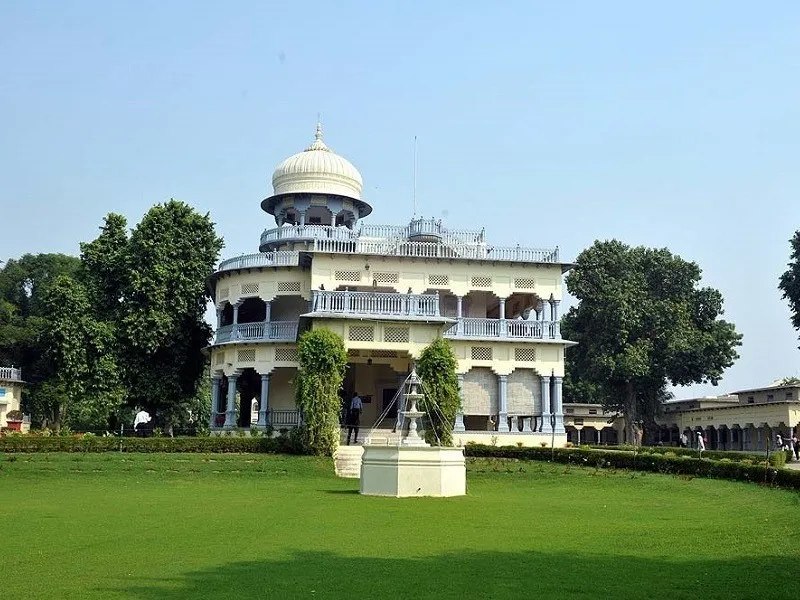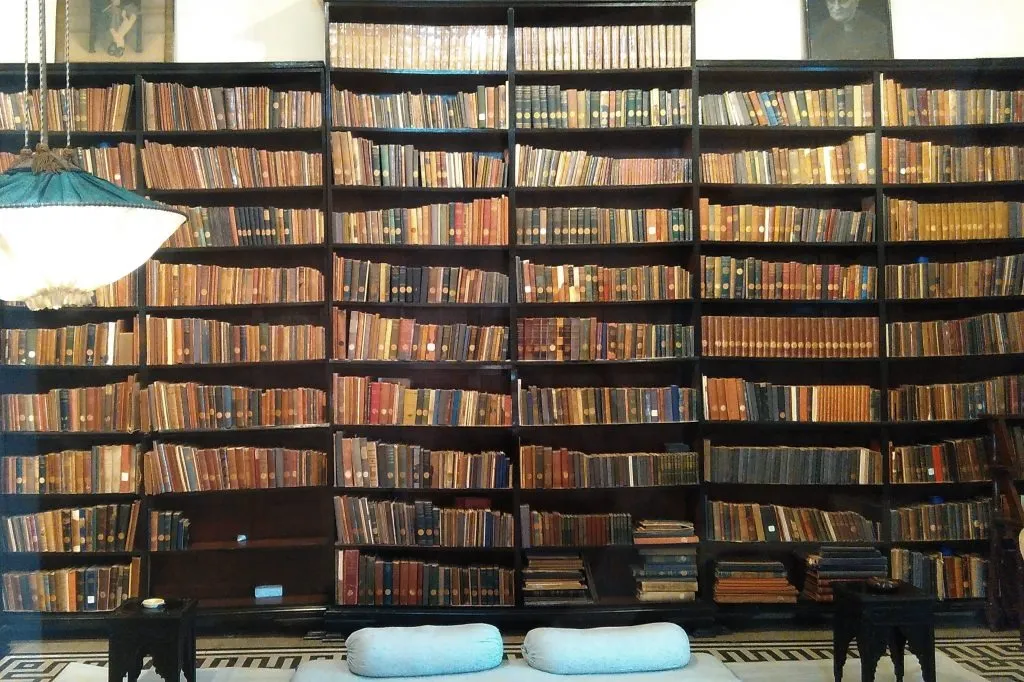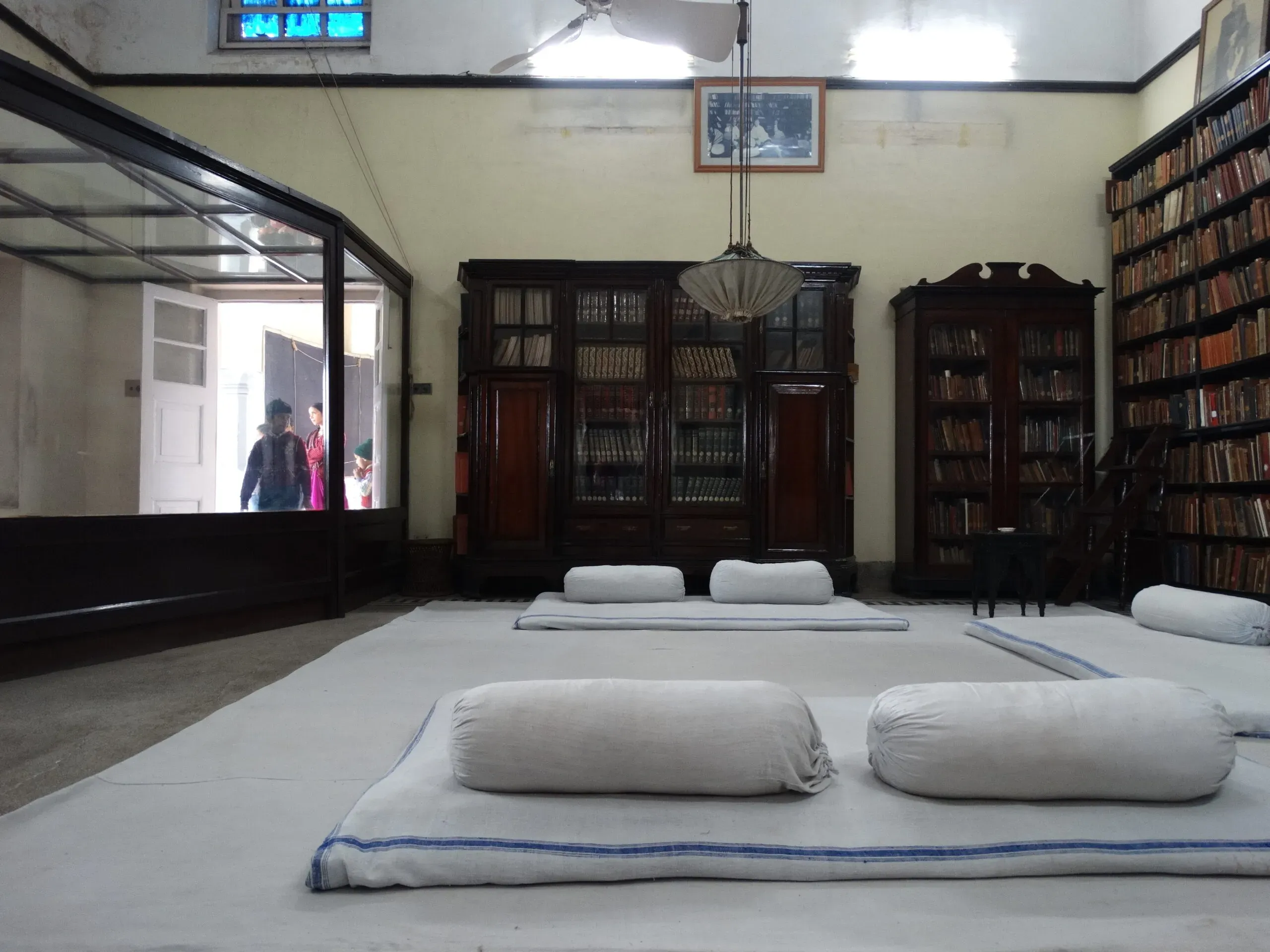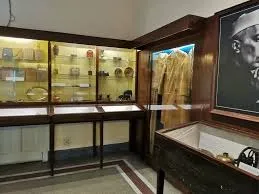Located in Prayagraj (formerly Allahabad), Uttar Pradesh, Anand Bhavan is an iconic site of historical and political significance. Once the ancestral home of the Nehru-Gandhi family, it holds a special place in the hearts of many as a symbol of India’s struggle for independence.

A Glimpse into Anand Bhavan’s History
Anand Bhavan is a testament to the pivotal role played by its residents in India’s independence movement. Built by Motilal Nehru, a leading figure in the freedom struggle, the house became a place for many significant political discussions and strategies. Notably, it served as a gathering point for key figures like Jawaharlal Nehru, Mahatma Gandhi, Sardar Vallabhbhai Patel, and Subhas Chandra Bose, who collectively steered India towards independence.

A Symbol of the Nehru-Gandhi Family Legacy
The Nehru-Gandhi family’s connection to Anand Bhavan spans generations. Motilal Nehru’s son, Jawaharlal Nehru, who later became the first Prime Minister of India, was at the center of the country’s political landscape, and his family continued to shape the nation’s future from this very home. The building stands as a tribute to their enduring influence on the nation’s political and historical trajectory.
Anand Bhavan as a Hub for the Indian National Congress
In 1930, Motilal Nehru donated Anand Bhavan to the Indian National Congress (INC), transforming it into the party’s headquarters. The building became an essential space for formulating major political strategies, making it a crucial site for the Indian independence movement. Leaders like Gandhi, Patel, and Bose would come together here to plan their resistance against British colonial rule.

Transforming Anand Bhavan into a Museum
In 1970, Indira Gandhi, Jawaharlal Nehru’s daughter, decided to preserve Anand Bhavan’s legacy by converting it into a museum. The museum today houses an extensive collection of artifacts, letters, photographs, and other historical materials that chronicle the Nehru family’s contribution to the nation’s freedom.
The Museum’s Educational Exhibits
The museum at Anand Bhavan features several exhibits that offer a closer look at India’s fight for freedom. Among the key exhibits are:
- Personal Items of the Nehru Family: Everyday items once used by the family members, including books, clothes, and furniture.
- Historical Documents and Photographs: Rare images and documents from critical moments in the Indian freedom struggle.
- Artifacts from the Movement: Objects like spinning wheels used during the Non-Cooperation Movement, reflecting the grassroots nature of the resistance.

Anand Bhavan’s Role in Education
Anand Bhavan today functions as more than just a museum; it serves as an educational institution that imparts knowledge about India’s independence journey. Students, historians, and visitors from all over the world come to learn about the sacrifices and political strategies that led to India’s independence. The museum’s rich collection inspires generations to uphold the values of democracy and freedom.
Anand Bhavan is not merely a building but a living symbol of India’s relentless journey to independence. With its deep ties to the Nehru-Gandhi family and its central role in India’s political and social history, it continues to educate and inspire. A visit to Anand Bhavan is not just a look back in time; it’s a reflection on the values that continue to guide India’s future.
